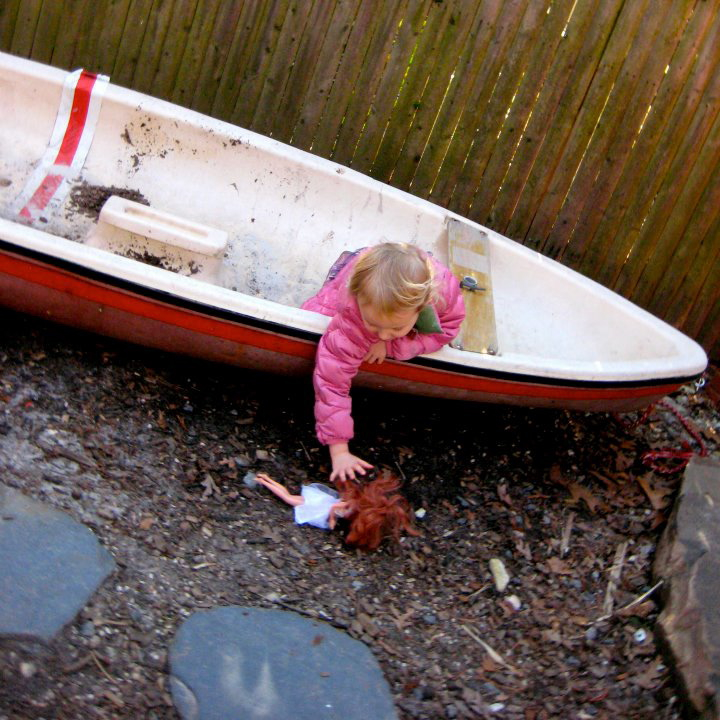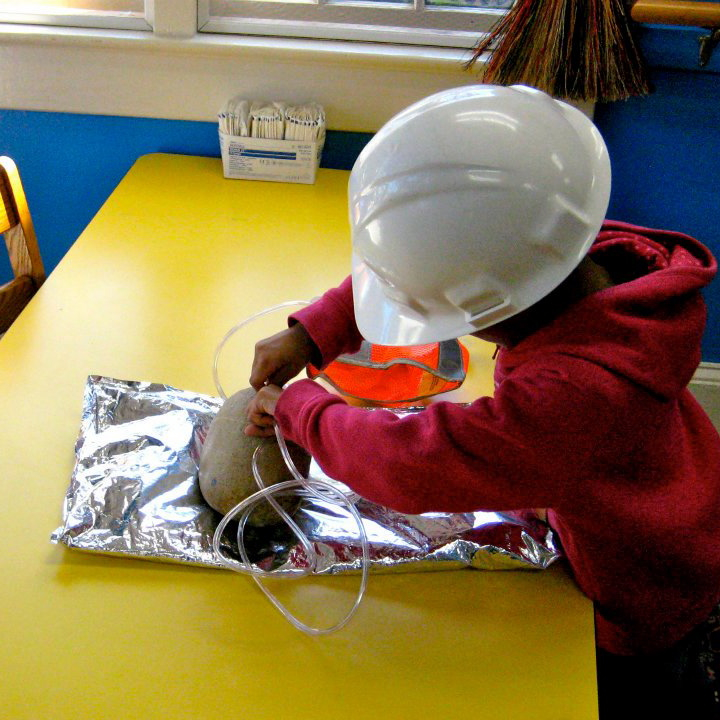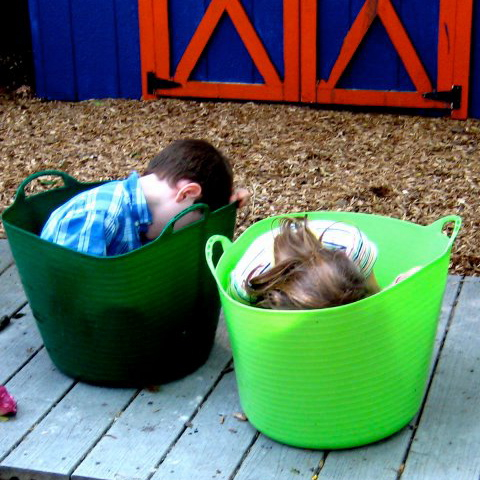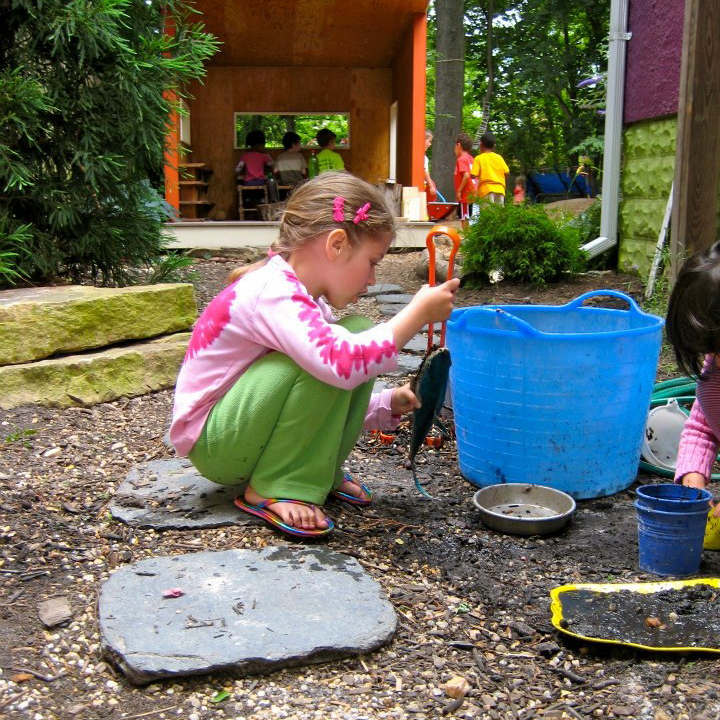Buying in and dramatic play
"She really believes she is on a rescue mission, doesn't she?" asked my husband as he looked through the Play 365 Plus 1 book the parents gave me as a gift. The book collection (so large that it is in two volumes) features a photo of play for every day of the year 2012. I looked at the photo and thought about that moment and why I took the picture then chose it specifically for the collection. While I do talk to the children about their imaginary play, I won't when they are fully immersed as this child was...in these cases, which are almost always, I simply watch and listen. I took the photo from the steps, I didn't want her to know I was observing, much less taking a photo. She was taking the doll and kind of swimming her along, so that her hair dragged on the ground.
It reminded me of another Track child from 2011 who used to fall off our Oriental carpet into the wooden floor water because her mother was forever not watching her and her sisters. She used to purposefully and carefully make her hair spread out around her head on the wooden floor water so it looked its mermaid-best. She played that for over 2 months -- others played too, who wouldn't want to fall off an Oriental carpet boat into wood floor water again and again? Then, I was reminded of some softly colored and glowing, yet somehow tragic, Maxfield Parrish type scene, titled "River Nymphs in Waterlilies" or similar -- and that would be an adult reference. When I took the photo of the Rescue Mission, I knew what she was doing because of the observations in 2011. I saw using the language of children's play rather than my own and even though this time our player was in an actual boat, she was still in the water. The dirt and wood chips lapping in gentle, but perilous, waves against the boat's hull. The doll's hair needed to float about tragically, because that would make the rescue all the more heroic.

Sandra Bernhard said, "If you close your eyes, you could just as well imagine me to be vintage Ali MacGraw, circa 1968." This is an adult's view of Pretend I am... but it works, as long as we can visualize vintage Ali MacGraw, circa 1968. Just by saying it, Bernhard has become MacGraw for that moment. This is the buy-in, but an adult may still have one foot in the world where only Ali MacGraw can be Ali MacGraw, unless he or she is an actor. But children are not acting. They simply are, they do not have to actively buy in to believe. That first step has already been taken.
So I looked through the books and came up with a few more moments that showed just that, Pretend I am... These children did not think, "Oh, in order to make an alien egg hatch, I must put on a hard hat and get these tubes plugged right in!" No, she drew on her understanding of electricity and eggs and doctors and scientists, etc. etc. and she found the things that spoke to her, "These will definitely work." And it did. Everyone had to run and hide because the egg hatched. Then she hatched the egg again and again. And the children ran and hid again and again.

I found this photo of two children nesting in buckets. Children like buckets and if the bucket is child-sized it is even better. These children are velociraptor tiger mothers. Those don't exist in the adult world, but they do in their world. During her play, the girl liked to be current day mammals (usually cats, horses, cheetahs and tigers) while the boy liked to be some variety of dinosaur. This was their compromise to combine their two interests and they arrived at it by themselves. They agreed to agree which is what often happens when children play together. They would nest, invisibly of course, you can't see them, then they would burst out of their nests, babies hatched-born, and run from some predator. They would return with food for their babies or to have more babies because more is more. Please note the hatched-born -- a teacher may force the issue of mammal versus dinosaur reproduction, but these mothers had already solved it by combining these two words during their negotiations.

This photo was taken during one of those quiet moments of play towards the end of the school year. The children were comfortable in their play choices and the space. They knew who to go to for information and contributions and felt comfortable and confident playing alone when necessary. I chose this photo because on one hand, she might have wanted to know how much sand, dirt, mud it would take to fill up this hollow shark -- aren't you, even now, wondering about that very question? Or perhaps she found it interesting to delicately and slowly pick up sand, dirt, and mud using these bright orange tongs. But maybe, just maybe, she was thinking, "I have to be careful feeding this shark because of its row upon row of sharp, biting teeth, but my work is never done. This shark must be fed!" In the end, it doesn't really matter because the moment, the simple action of feeding a hollow rubber shark with bright orange tongs brought her all that and more that we as adults can only imagine.

